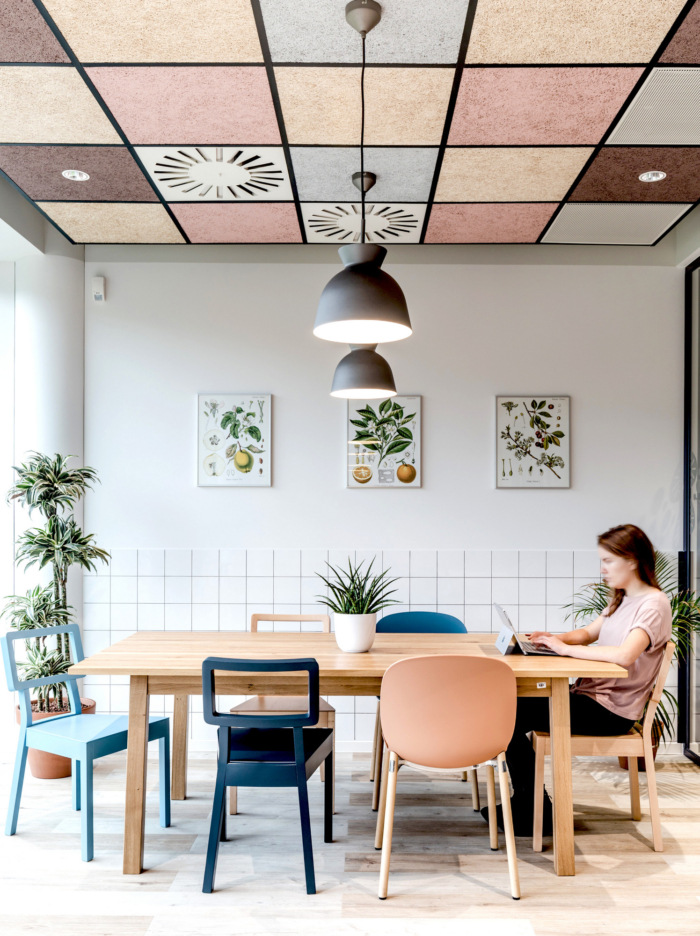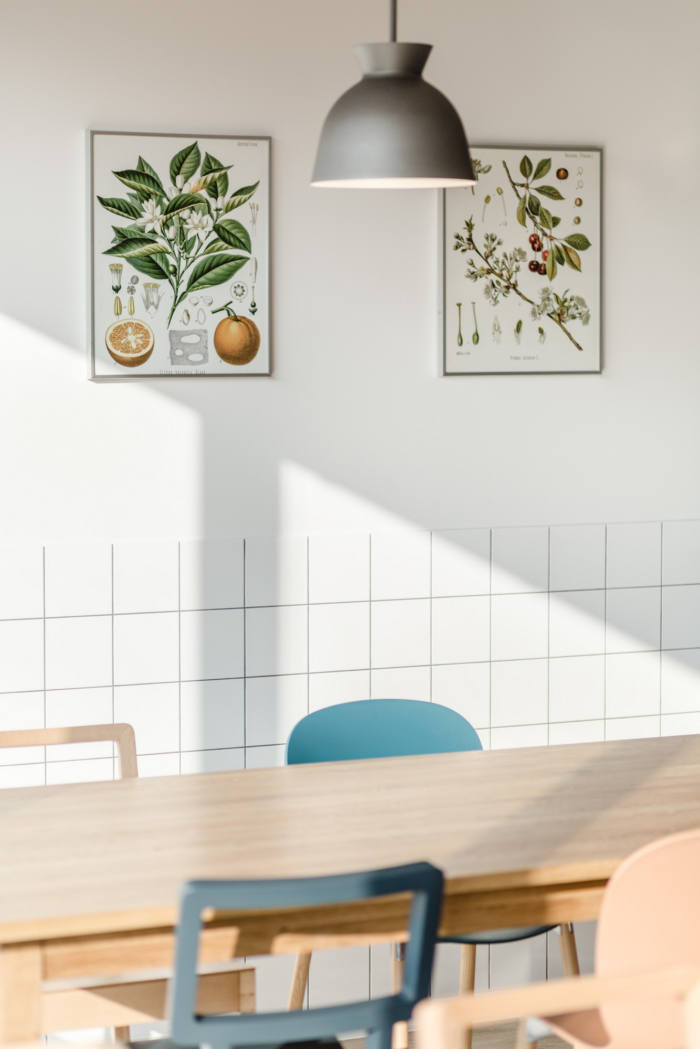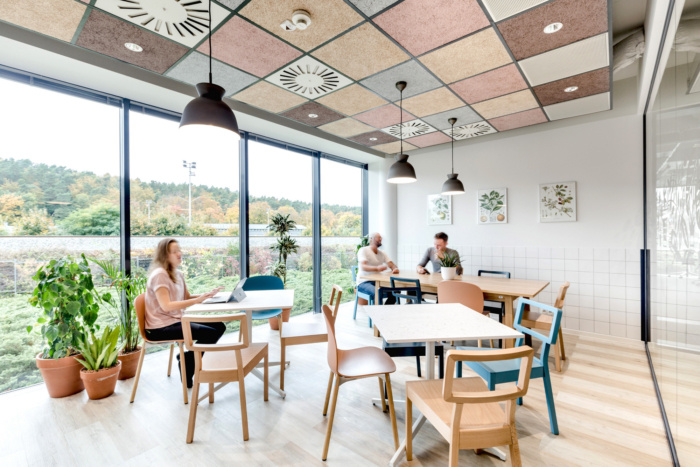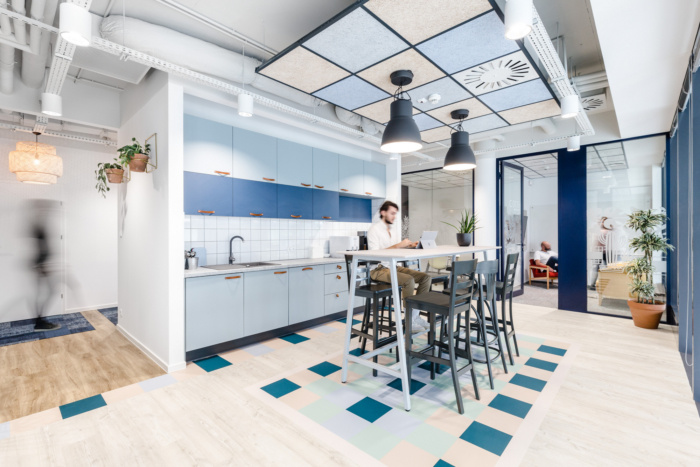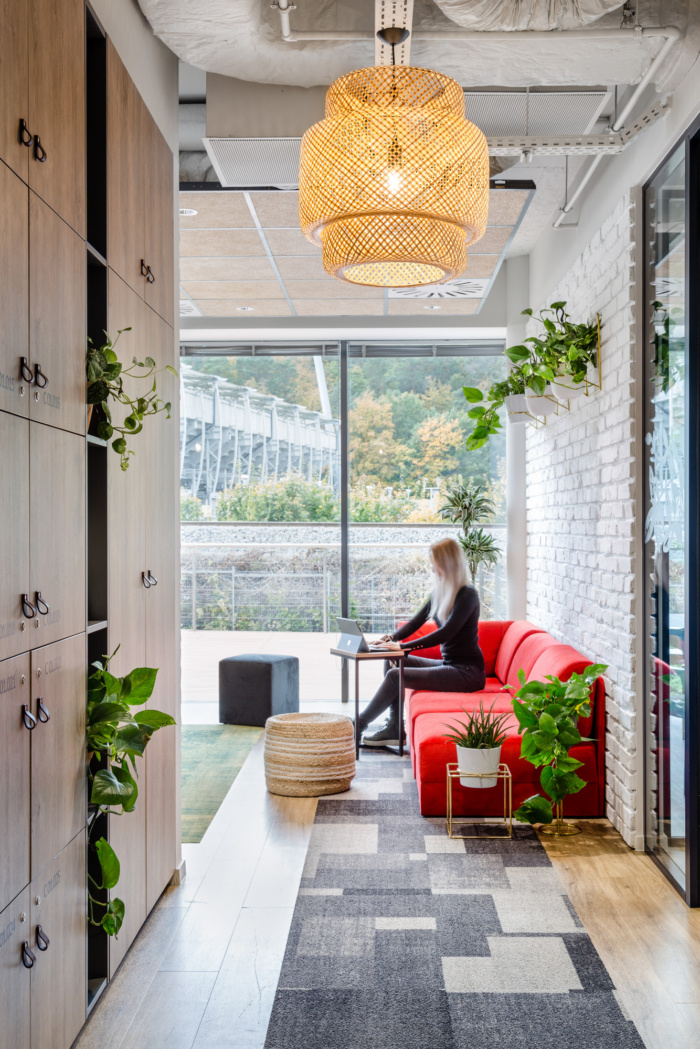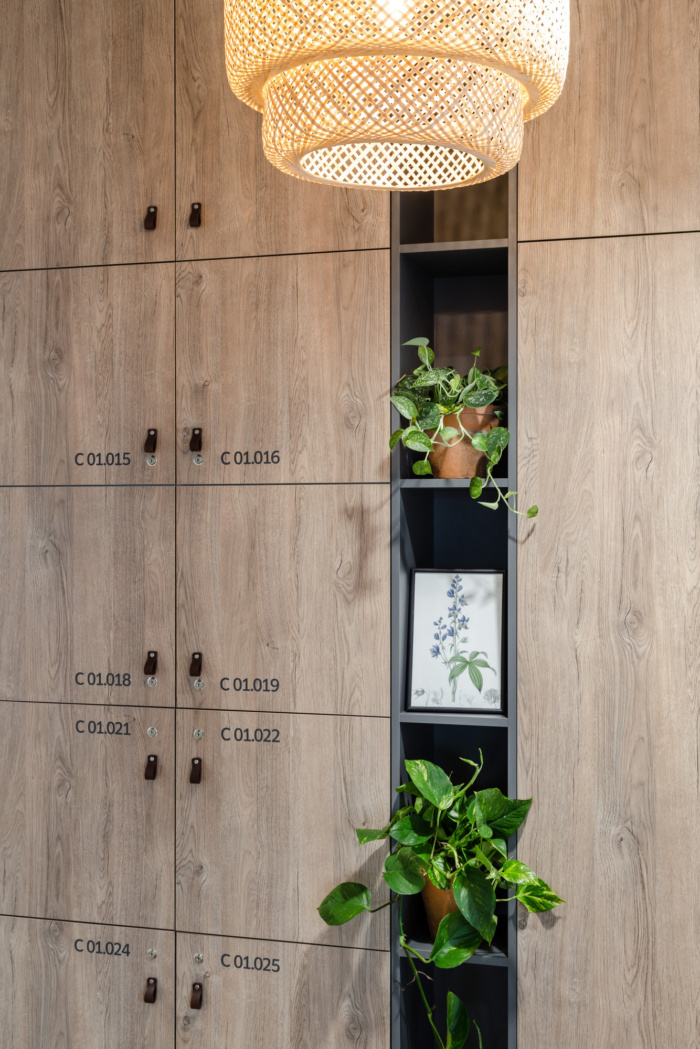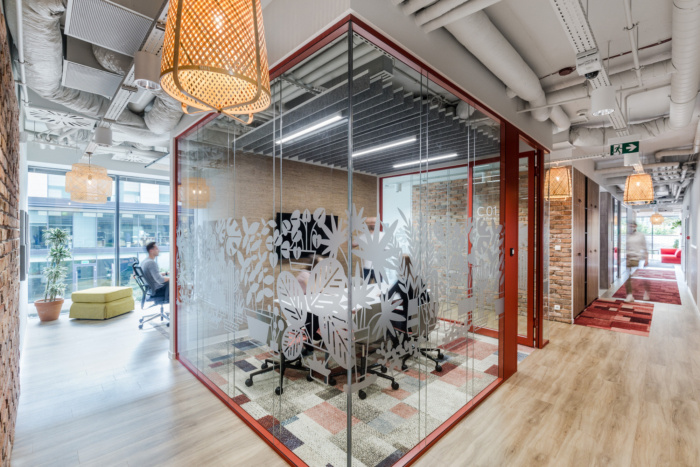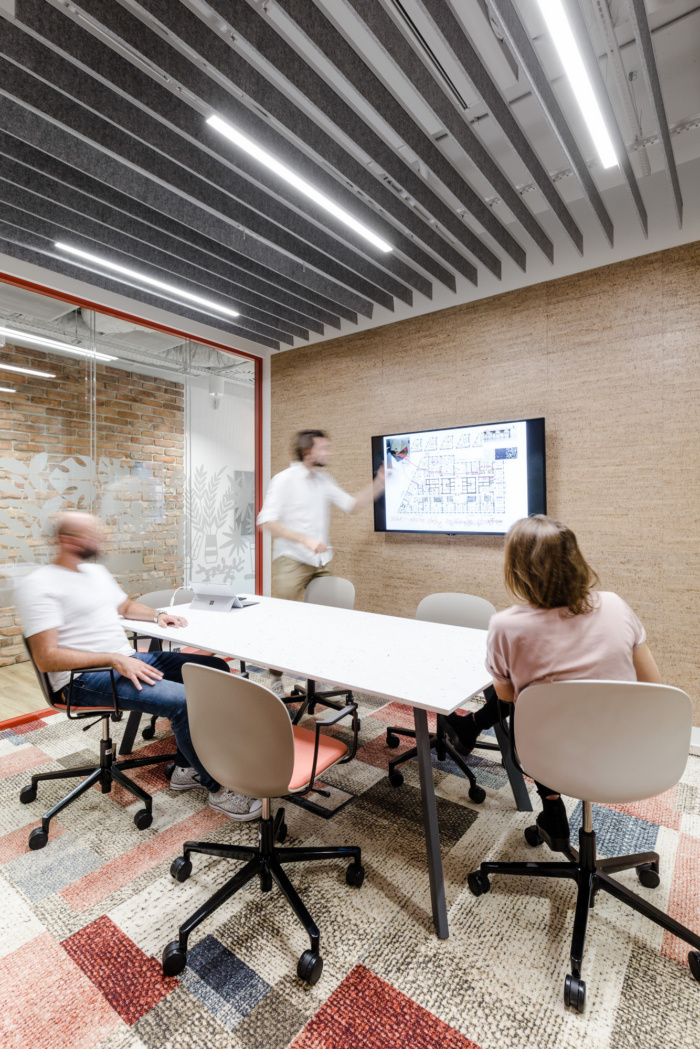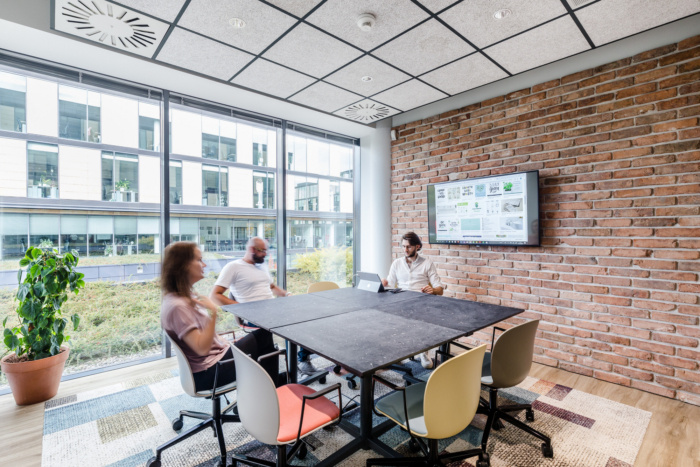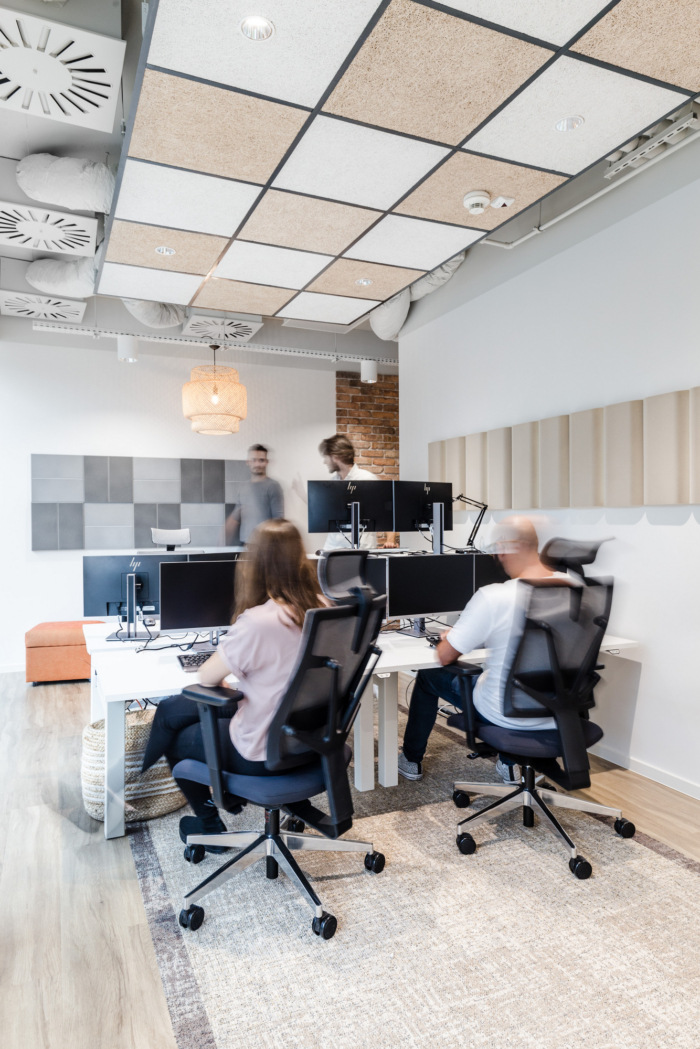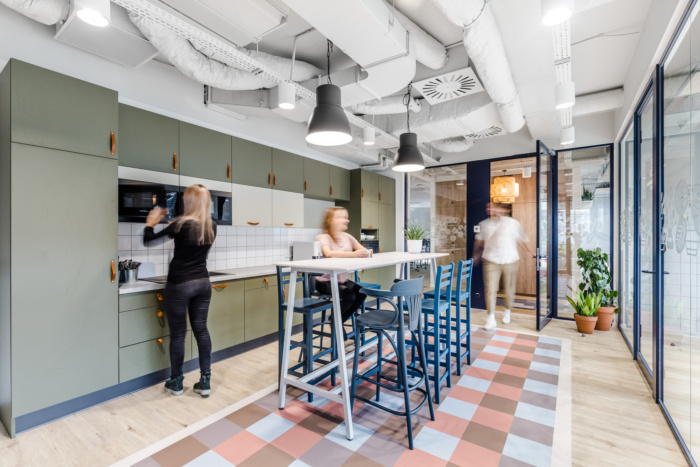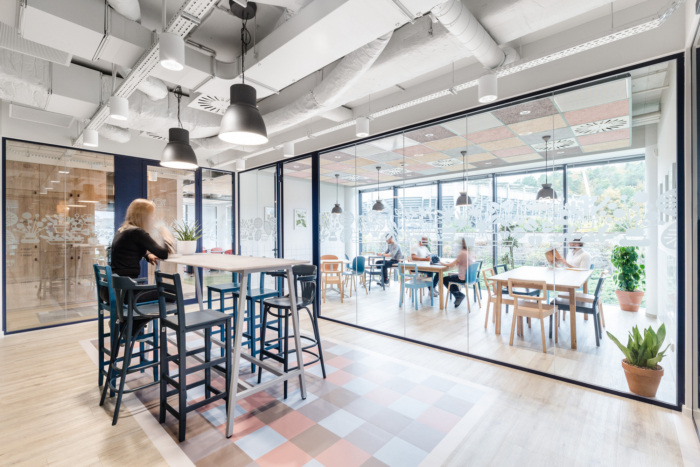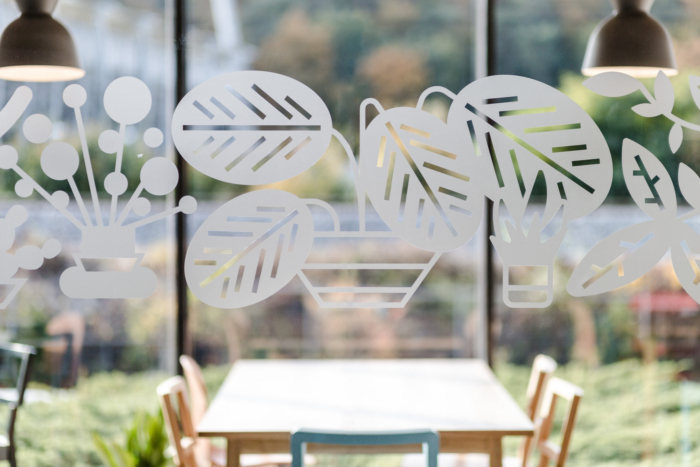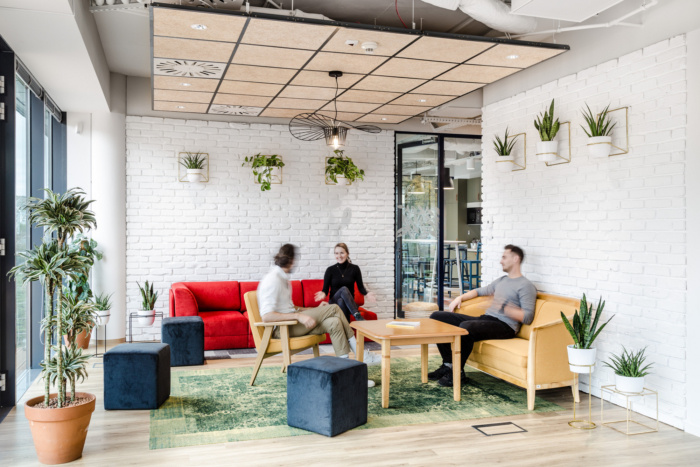
Nordea Less Waste Offices – Gdynia
A space that uses 80% recycled and ecological materials, the Nordea "Less Waste" office in Gdynia aligns the European financial group with their mission to minimize their environmental impact.
workplace was tasked with the environmentally aware offices of Nordea, a fin-tech company, located in Gdynia, Poland.
The first Less Waste Office in Poland uses about 80% recycled and ecological materials, by design. This undertaking proves that environmentally friendly projects go hand in hand with functionality, aesthetics and meeting the end users’ needs.
The life cycle of an office space is typically about 5–10 years. For the architecture industry this compares to a single use plastic bag. After this time, most of the office equipment becomes waste. This means that the design process is based on a linear cycle, which is detrimental to nature. Architects from Workplace Solutions wanted to change it.
Among the popular topics today are ecological design and minimising the carbon footprint. There were no examples of how to apply these practices on a larger, commercial scale, which is something we wanted to change. Architects decided to pave the way for environmentally friendly design and to create a working space that complies with this approach. That’s how the Nordea Less Waste Office story began. Nordea is a firm that care about environmental responsibility, and have accepted the risks behind an innovatory means of waste reduction in office design. The less waste idea is intended to strengthen the employee’s identification with the company’s values, consciously approaching the issue of environmental protection.
This is an office which demonstrates that it is possible to incorporate sustainable development in working space design. A design that is beneficial for everyone and everything – the environment, people and business. Less Waste Office is 1,100 sqm of space where approximately 80% of the interior elements are recycled, reused and ecological. What does this number mean exactly?
Most of electrical and ventilation systems have been refurbished and reinstalled. Unused ceilings, acoustic panels and carpets from manufacturers’ warehouses were collected. Furniture, lamps and decorative elements found in the commissions and advertising portals were renovated. Used pots and older plants were given a “second life”. They used recycled bricks, ecological paints, biodegradable foil decorations and natural cork on the walls. Ecological and recyclable products were used: carpets without harmful bituminous primers, table tops made of recycled plastic packaging from Smile Plastics, conference chairs made of PET plastic or recycled aluminum.
What about the 20% of brand-new interior elements? These mainly comprise elements used in the individual working spaces, including desks and chairs – the most used furniture in the office. This is determined by ergonomics – caring for the employees’ health means they have to be good. Our client’s standards assume that the furniture must be equally functional and able to ensure work comfort.
The creation of the concept was the result of an atypical design process, one similar to patchworking. Designers choose and ‘sew’ the materials together to create unique design. At the same time they looked for furnishings in warehouses, commission shops, and on advertising sites. The style this created was finished off with niche, ecological solutions.
The aesthetics already familiar to the customer was maintained, as used in their previous designs. It is warmer Scandinavian style with a variety of colours, furniture, materials and decorative elements. The result triggers emotions tied to a cosy home, retreat or favourite café, where the objects bear an emotional charge and are not impersonal. Raw materials like brick, clay and even plants complement this idea and create a vibe close to nature.
By creating the Less Waste Office, Workplace Solutions wanted to share good practices and educate employees, future clients and the whole design industry. It is the motivation for further implementations, which will have even more ecological solutions and certified materials. For us, as designers, it’s not a choice but a requirement that will help create a better, sustainable future. None of us should forget that there’s no planet B.
Design: workplace
Design Team: Dominika Zielińska, Małgorzata Romanowicz, Daniel Dziczek
Photography: Adam Grzesik
